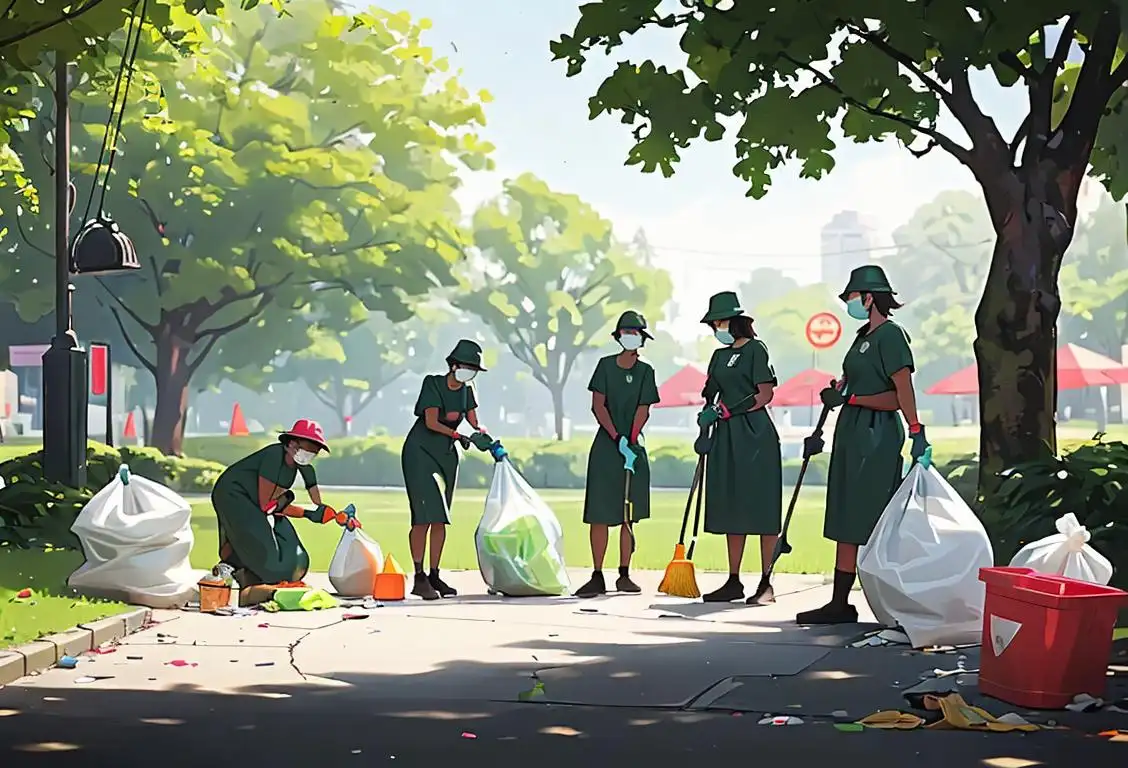National Environmental Sanitation Day

Welcome to WhatNationalDayIsIt.com, where we uncover the fascinating history behind National Environmental Sanitation Day! Get ready to learn about the importance of keeping our surroundings clean and tidy, and maybe even pick up a fun fact or two along the way.
When is Environmental Sanitation Day?
It's national environmental sanitation day on the 30th January.
What is National Environmental Sanitation Day?
On this special day, we come together to raise awareness about the crucial role that cleanliness plays in our lives. National Environmental Sanitation Day urges everyone to take action and maintain a clean and healthy environment.
The first step towards celebrating this day is to realize that a clean environment not only benefits us individually, but also contributes to the well-being of our communities and the planet as a whole. By properly disposing of waste, keeping our streets clean, and practicing good hygiene, we can help prevent the spread of diseases, create a more pleasant living environment, and protect the beautiful nature surrounding us.
The Internet History of National Environmental Sanitation Day
Our database has detected 149 online mentions of National Environmental Sanitation Day. The highlight of online mentions occurred on January 30, 2016.
Did You Know?
Did you know that separate garbage bins for recyclables, paper, glass, and general waste were first introduced in the 1970s? It's wonderful to see how our efforts to keep our environment clean have evolved over the years! So, remember to recycle and reduce your carbon footprint today and every day!
History behind the term 'Environmental Sanitation'
1911
Emergence of Sanitation Movements
In 1911, the concept of environmental sanitation began to emerge as a response to the increasing health concerns related to poor living conditions and lack of proper waste management. This marked the starting point of organized efforts to address sanitation issues and improve public health.
1948
World Health Organization's Definition
The term 'environmental sanitation' gained recognition on a global scale in 1948 when the World Health Organization (WHO) defined it as 'the control of factors in the environment that can potentially affect health.' This broad definition encompassed various aspects such as water quality, waste management, hygiene practices, and pollution control.
1960s
Sanitation and Hygiene Movement
During the 1960s, there was a significant shift towards recognizing the interconnectedness of sanitation and hygiene. This led to the emergence of the Sanitation and Hygiene Movement, focusing on raising awareness and implementing comprehensive approaches to improve sanitation practices and ensure a clean environment.
1978
International Conference on Primary Health Care
The International Conference on Primary Health Care, held in Alma-Ata, USSR (now Kazakhstan), in 1978, emphasized the importance of environmental sanitation as a fundamental component of primary healthcare. This conference highlighted the need for integrative approaches that consider both socio-environmental factors and medical interventions to achieve better health outcomes.
1990s
Sustainable Development Goals
In the 1990s, the concept of environmental sanitation gained further momentum with the inclusion of related goals and targets in international agendas. The United Nations' Sustainable Development Goals (SDGs), particularly Goal 6: 'Clean Water and Sanitation,' emphasized the significance of environmental sanitation in promoting overall well-being and sustainable development.
Did you know?
Did you know that separate garbage bins for recyclables, paper, glass, and general waste were first introduced in the 1970s?Tagged
awareness health environment cleanlinessFirst identified
30th January 2016Most mentioned on
30th January 2016Total mentions
149Other days
Environmental Sanitation Day
Clean Air Day
Rx Drug Take Back Day
Pollution Day
Bpa Week Day
Clear Air Day
Pollution Control Day
Prescription Drug Take Back Day
Hiv Testing Day
Lobster Day








